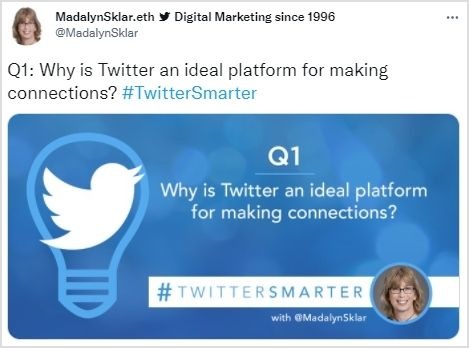So you’ve identified the social channels where your ideal audience hangs out, created accounts – complete with all the brand profile details, and are ready to start posting.
But hang on: what are you going to post? How often are you going to post? And how do you plan to engage your audience?
You need a social media plan to answer all this and more. So, in this post, we’ll show you how to create a social media content plan in ten simple steps. Once you’re done, you’ll have the answers to what and how often you’ll post, including a social media engagement strategy.
Ready to get to work? Great! We recommend you pull up a fresh document or take a pen and a piece of paper so you can plan along as we discuss each step.
How to create a social media content plan in 10 easy steps
Before we dive in, let’s get this straight off the bat: always focus on providing value with your social content. Instead of taking a full-blown self-promotion strategy, take the value-first approach to attract, nurture, and sell on social media.
- Revisit your target audience profile and social media goals
- Polish your social media content categories for each social channel
- Decide the formats you’ll use
- Create an engagement plan
- Have a plan to share others’ content
- Repurpose and curate content
- Create a plan to encourage users to create content for you
- Work out how you’d promote yourself
- Pick out a posting frequency and create away
- Reflect and tweak
In the framework, we share below and the examples we’ve added, you’ll see that everything points towards providing value. Let’s get started.
Step 1: Revisit your target audience profile and social media goals
Put simply, content that resonates with your audience is the content they engage with. To create such relevant content, start with pulling out your buyer’s persona to understand who are the people you’re selling to.
By doing so, you’ll identify the topics that’ll interest your target audience – either educating or entertaining them.
Pro Tip:
If you have an up and running blog, look at its analytics. See the type of content that gets the most traffic and engagement. This will give you a list of topics that’ll interest your audience.
Simultaneously, revisit your social media goals so you can create content that meets these goals. For example, if you’re planning to increase brand awareness, you’ll want to lean on sharing valuable tips with your audience to get and hold their interest.
If you already have an interested-in-buying-from-you audience, your goal might be to sell them. Again, the content that you create to this end will be different than content that creates brand awareness.
Once you’ve refreshed your goals and ideal audience, make a list of broad content categories that’ll create social media content on.
Let’s say, you’re creating content for a to-do list app. Based on your audience’s interests, your broad content categories might include:
- Tips on creating and optimizing to-do lists
- General productivity tips
- Productivity frameworks/strategies
You don’t need definite content categories at this point. A rough idea is good to get your creative gears shifting.
If you’re stuck, consider enrolling in a social media marketing course. A good course can help you set your content goals and give you ideas on how to create the right type of content for your social media channels.

Analyze, Understand, and Improve Your Social Strategy
Stack your key social metrics against those of your competitors and make targeted steps towards social media success.
14 days free trial – no credit card requiredStep 2: Polish your social media content categories for each social channel
On to polishing your content categories now.
If you’ve created an enormous list of several ideas, start by filtering them to 3-4 content categories you want to post content on. To do so, ask yourself: would my audience enjoy consuming this topic?
All better if you can talk to your target audience or have built a community to learn about your audience’s interests better. Either host a poll or survey your audience to find out what they’d like to hear from you on social media.
By the end of these exercises, you’ll have your broad social content categories ready. Now, work on polishing them by figuring out what type of content you’d share under each category, or get creative and share your social media content through digital flipbooks.
Picking up on the example we’ve shared above on the to-do list app, the polished categories will look like this:
- Productivity tips: general productivity tips such as the 2-min rule
- Productivity strategies: stepwise breakdown of various frameworks
- To-do list content: memes, jokes, and bite-sized, quick tips
Step 3: Decide the formats you’ll use
There are tons of formats you can use in your social media plan. You could take a video-first approach, for example. Or, you could create lots of written content. Ideally, a healthy mix is phenomenal.
Once you start tracking which types of posts (text-based, link-bearing, video-based) get the most engagement, you can create more of them. For now, it’s a good idea to mix up the formats to keep things interesting until you figure out what’s resonating with your audience the most.
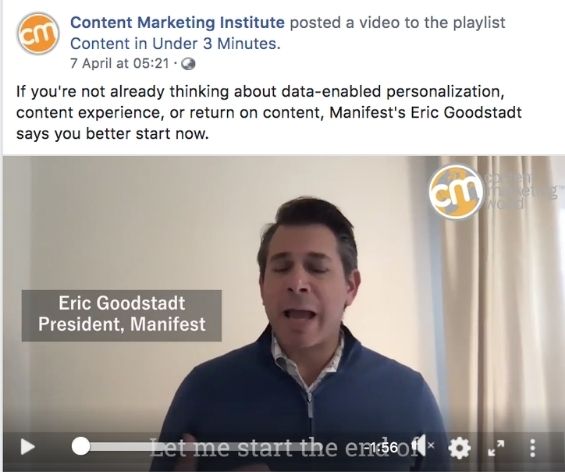
Let’s work out these details for the to-do list app we’ve been talking about:
- Productivity tips: Short tweets + tips with some detail on LI, FB, and IG.
- Productivity strategies: Twitter threads + Stories/Fleets + full posts on IG, LI, and FB
- To-do list content: text-based posts + Stories/Fleets + memes on IG.
Keep in mind that Stories are a great feature to create content for. Half a billion people view Instagram Stories daily.
58% say they’re interested in a brand after seeing them in Instagram Stories. 50% have even gone on to purchase after seeing service or product in a Story. LinkedIn Stories and Fleets are also slowly gaining popularity.
Meaning: you can’t ignore creating content for Stories. The best part? There are boatloads of ways to engage your followers with Stories. For instance, you can encourage them to vote with the poll sticker or engage in an AMA (Ask Me Anything) session with the questions sticker.
Other formats you can explore are: GIFs and social media graphics for on-brand visuals, videos, LinkedIn carousels, Instagram Guides and Reels, and live streaming on social media.
The formats you choose will depend on two factors: the social channels you’re active on and what your audience prefers. For example, if your b2b product’s audiences’ preference is video content, marketing by Tiktok short videos or Instagram Reels would be ideal for your b2b social media strategy.
Step 4: Create an engagement plan
Great content not only wows your audience but also gets them to engage with you. Want a foolproof plan to engage your audience? Ask them. Here’s how:
- Host AMA sessions
As discussed, you could host these in your Stories or you can always post them directly on social media.
- Conduct polls
Polls take zero effort to engage with, making them useful tools to add to your social media plan for engagement.
- Include a CTA in your post
Want your audience to retweet? Tell them. Want them to add to the list-based content you’ve shared or share their story with you? Ask them.
- Post funny memes
Posts that are truly relatable always get excellent engagement with people sharing them with their audience.

- Ask questions
Alternatively, go ahead and ask questions. These could be fun questions to boost your engagement rate such as this one:

Or, you could ask questions relevant to your business. Here’s another example from SEMrush:
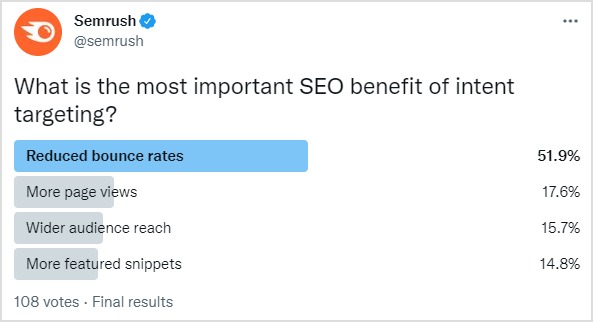
- Create giveaways
Giveaways are excellent ways to encourage folks to interact with your brand.
Joe Gibbs Racing recently hosted a giveaway that got them good engagement (look at those 369 retweets).

But for your social engagement to take off, it’s crucial you engage with your audience too. Why? Because it gets the law of reciprocity into motion whereby people return what you do for them. So if you’re frequently engaging with someone – say by commenting on their posts – they’re likely to return those comments.
Innocent does a brilliant job at engaging with their audience – replying to their comments, retweeting comments with a cheeky response, and responding to brand mentions as well.

There’s also another way to engage with your audience: participate in Twitter chats. These are typically hour-long chats bringing together interested folks under a hashtag and 5-10 questions. Biteable, a DIY video maker, regularly joins the #TwitterSmarter, for example:
Biteable’s strategy benefits them in several ways including better brand awareness (among chat participants) and showing their brand’s human side.
Once you’ve developed a strong social presence, you can also host a Twitter chat yourself.
Related Read: How to Build an Effective Social Media Strategy in 2022
Step 5: Have a plan to share others’ content
Speaking of engaging with others, it’s also helpful to share others’ content. Besides helping with your engagement, you can add resharing/retweeting content from other social accounts to your social media plan. This way, you’ll come across as less self-centered and more eager to share whatever’s valuable to your audience.
But remember: sharing someone else’s content is a huge responsibility. Why? Because the content you share is the content you agree with (unless you specify otherwise, for instance, by reposting with a comment).
Hence, every time you share something, ask yourself if it adds value to your followers and if it aligns with your brand values. If it doesn’t skip sharing it.
Thinking why you need guidelines here? Content sharing guidelines are essential for teams that plan to scale and those that have more than one person behind their social media handles. The documented guidelines ensure everyone on the team knows what’s okay to share.
That said, since we’re discussing sharing content, remember to make it a priority to reshare any positive customer feedback/reviews and user-generated content. This will help you loop social proof into your social media plan so you can gain your audience’s trust better.
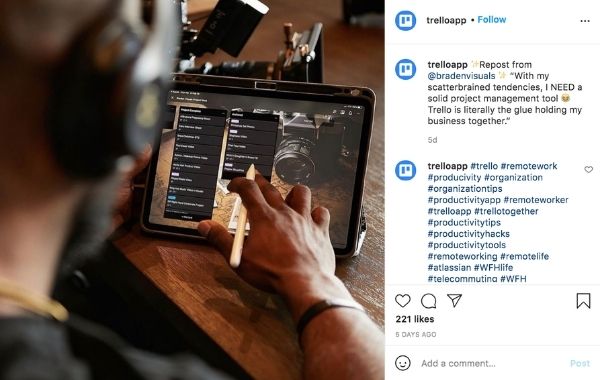
Step 6: Repurpose and curate content
If you’ve been thinking a solid media plan covers pumping out new content all the time, think again. Because there’s a lot of content repurposing and content curation involved too! Let’s address each one by one.
First, you can repurpose other content you’ve created. In the beginning step above, we suggested you check your blog for unearthing pieces that your audience enjoyed. Take those content pieces and start repurposing them.
The right way to do so: take out and tweak valuable information from the blog posts and share it on social. If you’ve created a listicle, for example, share the pointers in list format on Twitter. Share the pointers with a bit of detail on platforms like Facebook, Instagram, and LinkedIn. Follow the same process with how-to or step-based guides you’ve created. You can also package the information into LinkedIn carousels, Story format, or a video.
You can also use quick and easy tools like VistaCreate to repurpose your posts for several social media channels at once and experiment with design to appeal to more people.”
Second, curate content. This involves sharing content from other sources. Here’s a full guide on content curation. But to give you a primer: keep a pulse on trending content and share it on your social media channels. You can also get creative and take curation to the next level by curating social content. This Twitter thread on the best tweets is an inspiration to look up to:
Bonus: Share content you create for TikTok (if you have an account there) or other audience-relevant TikToks on other social channels – Twitter, in particular, receives them well. Tweets do well on LinkedIn and Instagram too.

Step 7: Create a plan to encourage users to create content for you
By now you’ve fresh content, curated content, content from other social platforms, and repurposed content in your social content pipeline. Know what’s still missing? User-Generated user-generated content or UGC.
This is content that your users create for you. Not only do you need this type of content to help fill up your social media content calendar, but it’s essential since 60% of folks perceive UGC as the most authentic content type. What’s more, according to consumer analytics, 85% of consumers agree UGC is more influential than content that brands create themselves.
Brands like Starbucks and Coca-Cola have fans sharing UGC round the clock. Here’s Starbucks sharing UGC content under their #starbucksrefreshers hashtag.
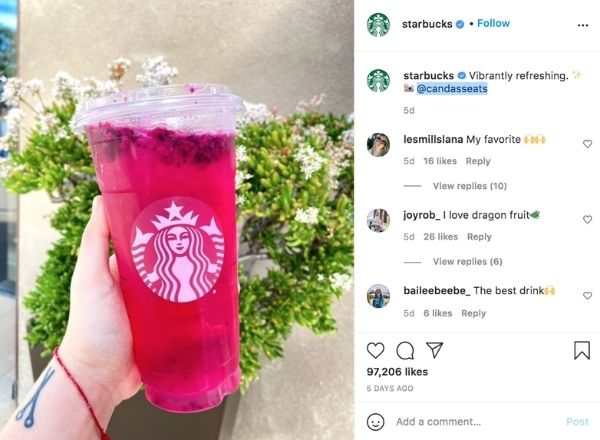
But how do you get your followers to create content for you? A campaign that’s tailored to this goal specifically can help. Work out how you’d like to push your audience to create content with your service/product. Then, create a hashtag and get people involved.
Step 8: Work out how you’d promote yourself
Next, you’ll want to figure out how and when you’ll promote your business and how you should distribute your blog content.
There’s a variety of ways you can distribute your content. You can do it through email marketing, SMS marketing, organic search, or social media. Businesses have found success in expanding their reach through Instagram, Facebook, Twitter, and LinkedIn marketing.
As we’ve said before, the best way to do so is to focus on providing value. If your social captions are written in a sales, promotional manner, you’ll likely repel your followers. However, if you generate buzz around, say a new report that’s releasing soon or a new feature that’ll be available soon, you’ll be able to capture your audience’s attention.
Another good tip here is to share behind the scene (BTS) content that goes into your business. Aim at sharing BTS content regularly to show your brand’s human side. At the same time, sharing BTS as you distribute content is also helpful. Let’s say you want people to watch your latest YouTube video. Consider sharing a BTS clip to get them to watch your video.
Pro tip:
Get the team involved in creating BTS content. Ask them to capture clips of their day-to-day work or share an insider joke that you can post on social media.
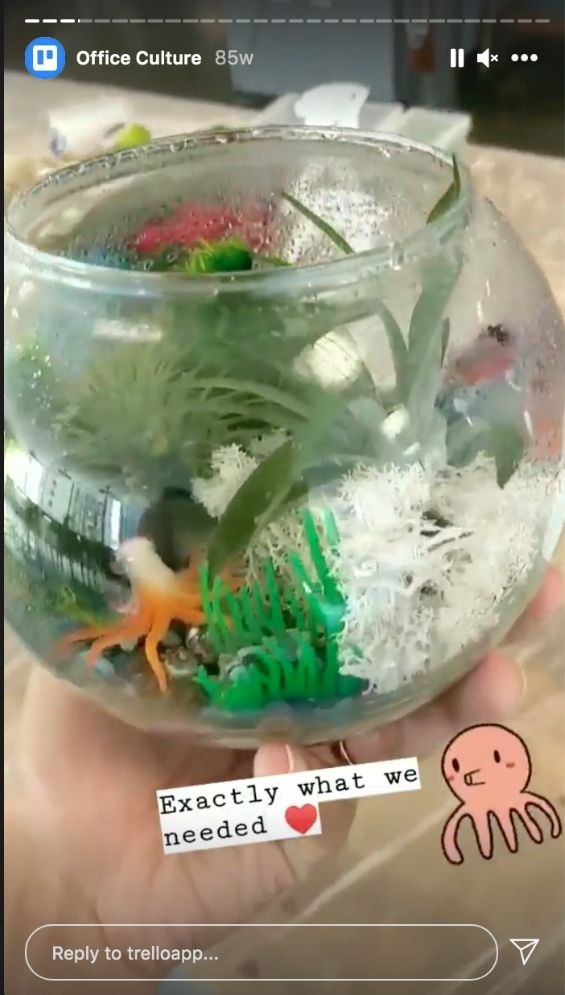
You can also share company milestones, awards, and achievements. Instead of sharing them blandly though, celebrate! Perhaps with a discount code. Content Marketing Institute, for instance, shares discount codes with their social media audience. Here’s another example from Thinkific.
https://www.linkedin.com/embed/feed/update/urn:li:share:6786355647559692288
One thing to remember as you plan out promotional content for your social media plan: maintain a healthy mix of valuable content and self-promotional content. Ideally, a 80:20 or 70:30 ratio works – 70-80% valuable content (including curated content) and 20-30% distributed and promotional content.
Step 9: Pick out a posting frequency and create away
With your social media content plan almost ready, work out a social media posting schedule covering when to post and how often to post. It’s best to do your homework around how often you should post on social and when.
Once you have a decent idea of each platform’s posting frequency, work on your timeline. If you’re only getting started, don’t pressurize yourself into posting a lot. Aim to be regular with posting on social media, but emphasize quality over quantity. This means posting one high-quality post on LinkedIn daily is better than posting three mediocre-quality posts daily.
Tip:
The best way to be consistent with your social media content is to create content first and schedule it before the time.
For instance, create a fortnight’s content plan and save it in a social media scheduler such as ContentStudio. This will make sure you’re consistent and also have time to engage with your audience daily. You can also have a look at a case study by ContentStudio on Best time to post on social media
https://www.youtube.com/embed/6mrp_SRynW0?start=198
Once you’ve settled on your publishing schedule, start creating. Here are three quick tips to write engaging social media posts:
- Begin with a hook – something that instantly arrests your audience’s attention. This could be a little-known stat, for example.
- Tell stories. Stories-based captions always win since our brains love stories.
- Tweak each caption to meet each platform’s expectations. Instagram users love emojis, for example, and LinkedIn users prefer thought leadership-style content.
Here’s another tip: when you’re sharing content from your blog, ask the blog post’s author to write a caption. Two reasons why this works: the author knows best what the piece covers so they can write an engaging caption for it and they can also easily share BTS content around the content they’ve created.
Pro tip:
Make sure all the social content you create aligns with your brand voice, values, and personality. This way, you can present a uniform business perception on all marketing channels.
Step 10: Reflect and tweak
This last step is crucial for making sure you create content that keeps resonating with your audience. Take a month’s or quarter’s worth of social content you’ve posted and pull out the engagement metrics.
Look at posts that are getting the most engagement in terms of likes/favorites, shares/retweets, and comments. Analyze what’s worked about these engagement-driving posts. Then, do more of what’s working.
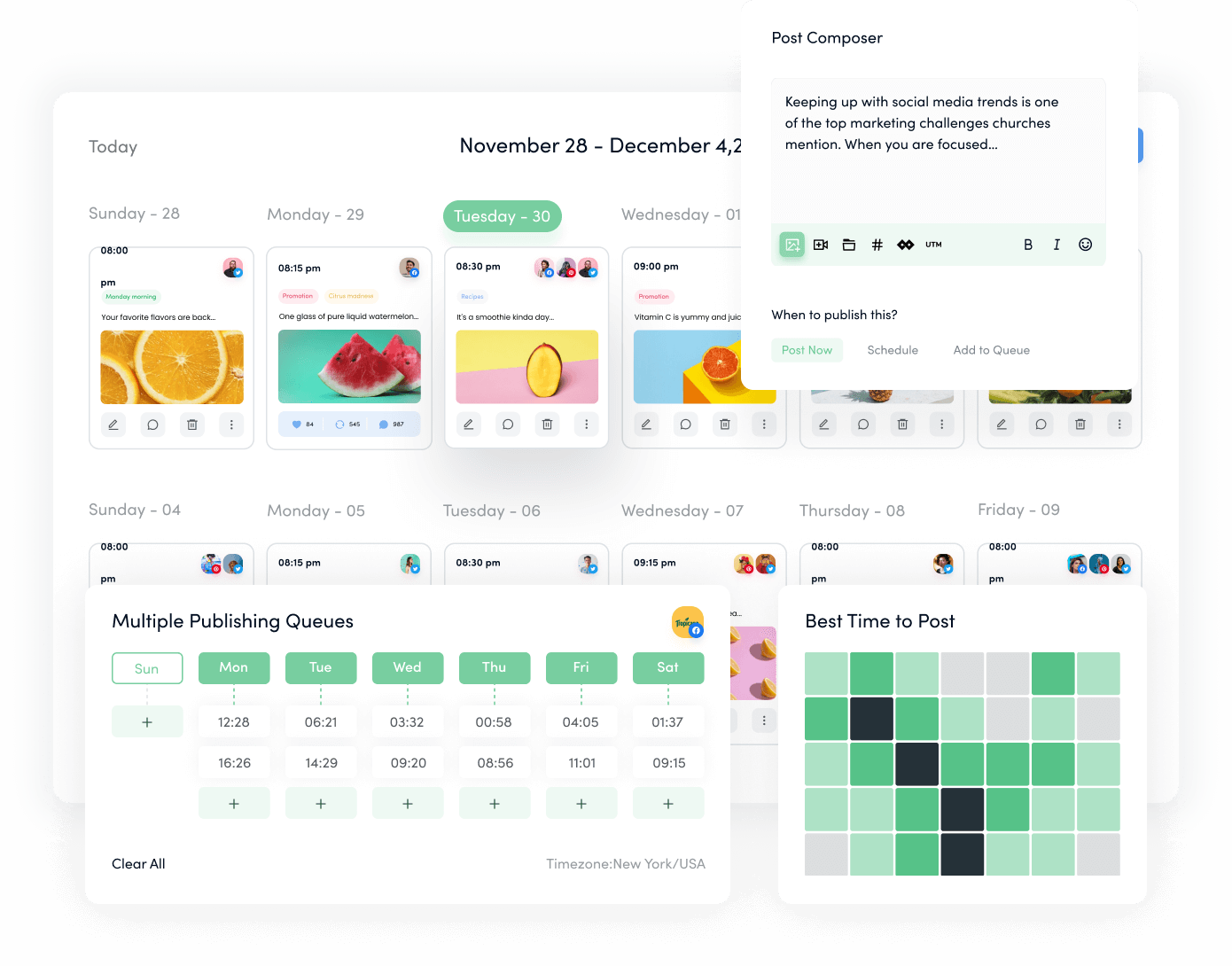
Plan, Organize and Schedule Your Social Content
Experience an organized workflow to streamline your social media posts. Increase your productivity and boost social engagement.
14 days free trial – no credit card requiredIn short
To recap, creating a social media plan isn’t tough, particularly, if you take things stepwise. Remember to start with a clear understanding of your target audience and social media goals. From there, work out the type of content you want to create, the formats you’ll use, your posting schedule, and an engagement plan to connect with your audience.

